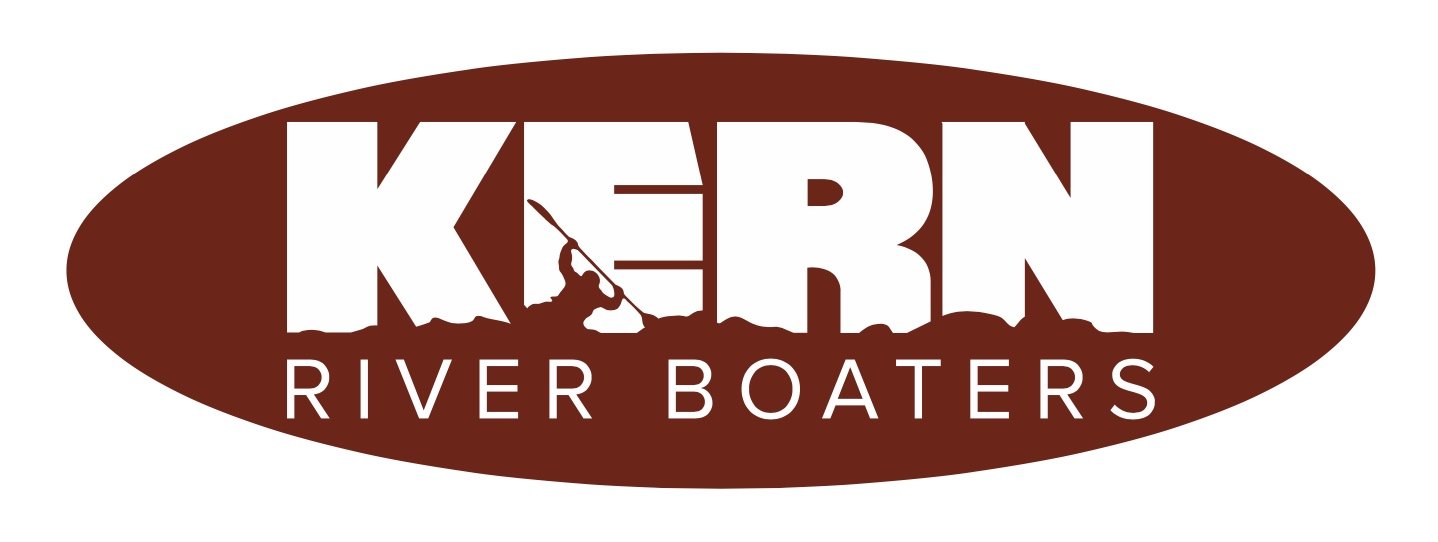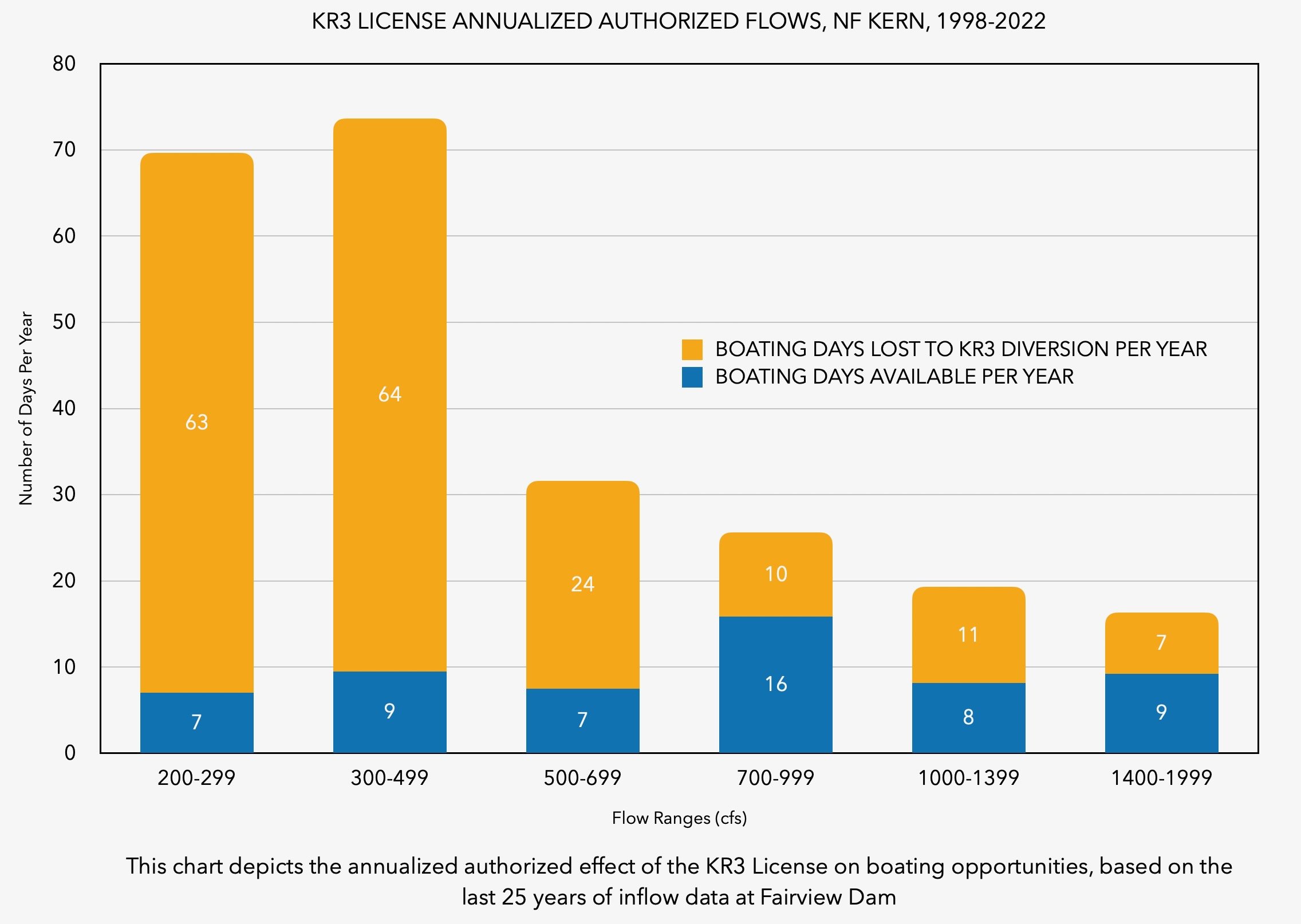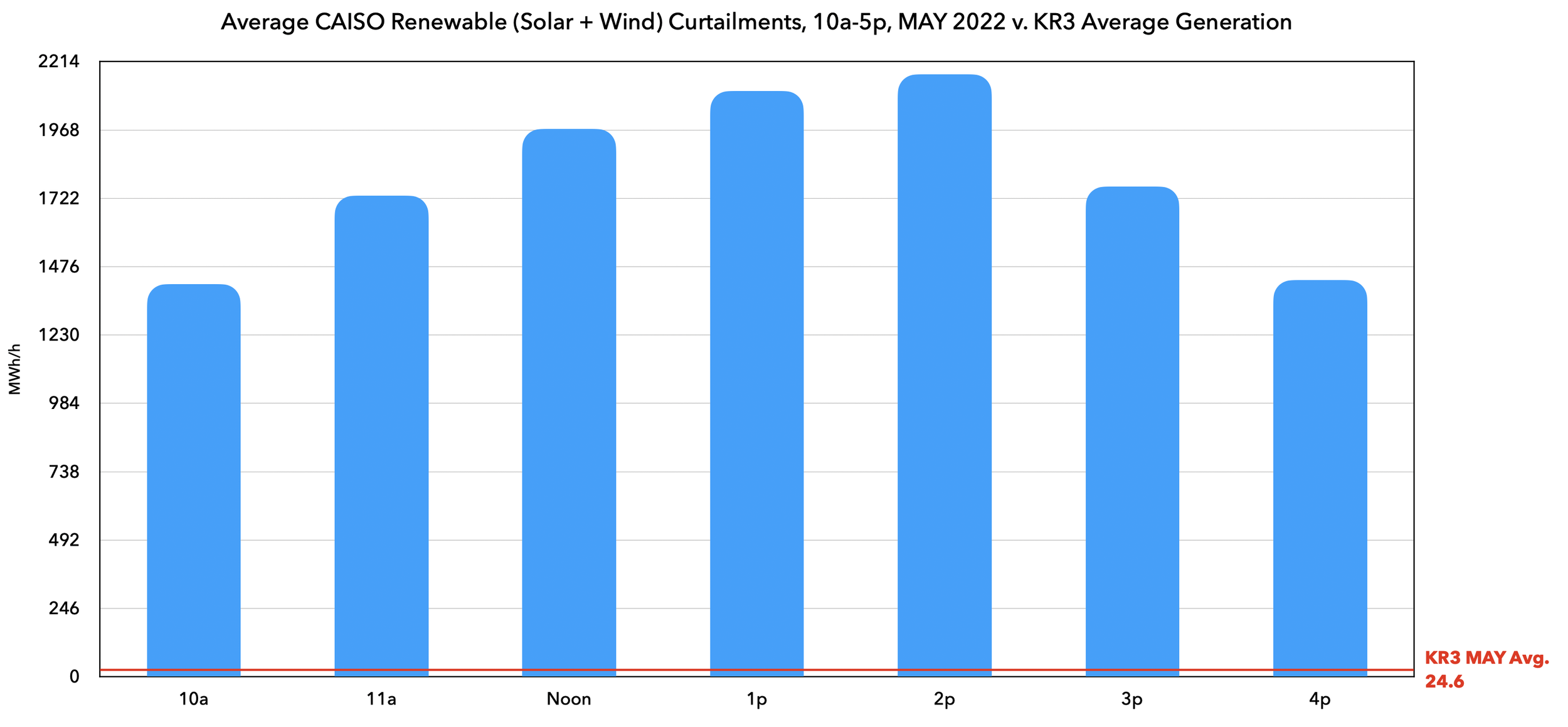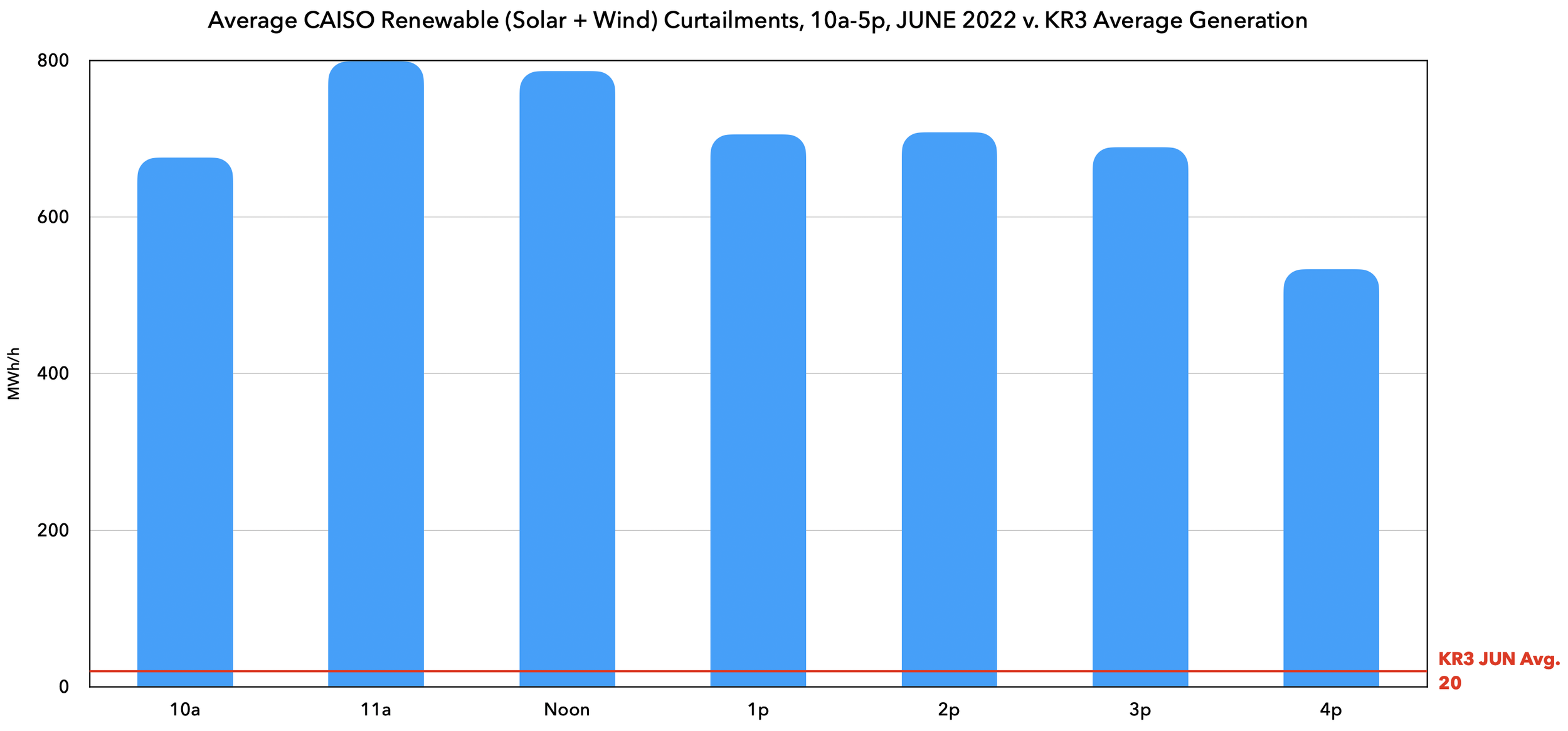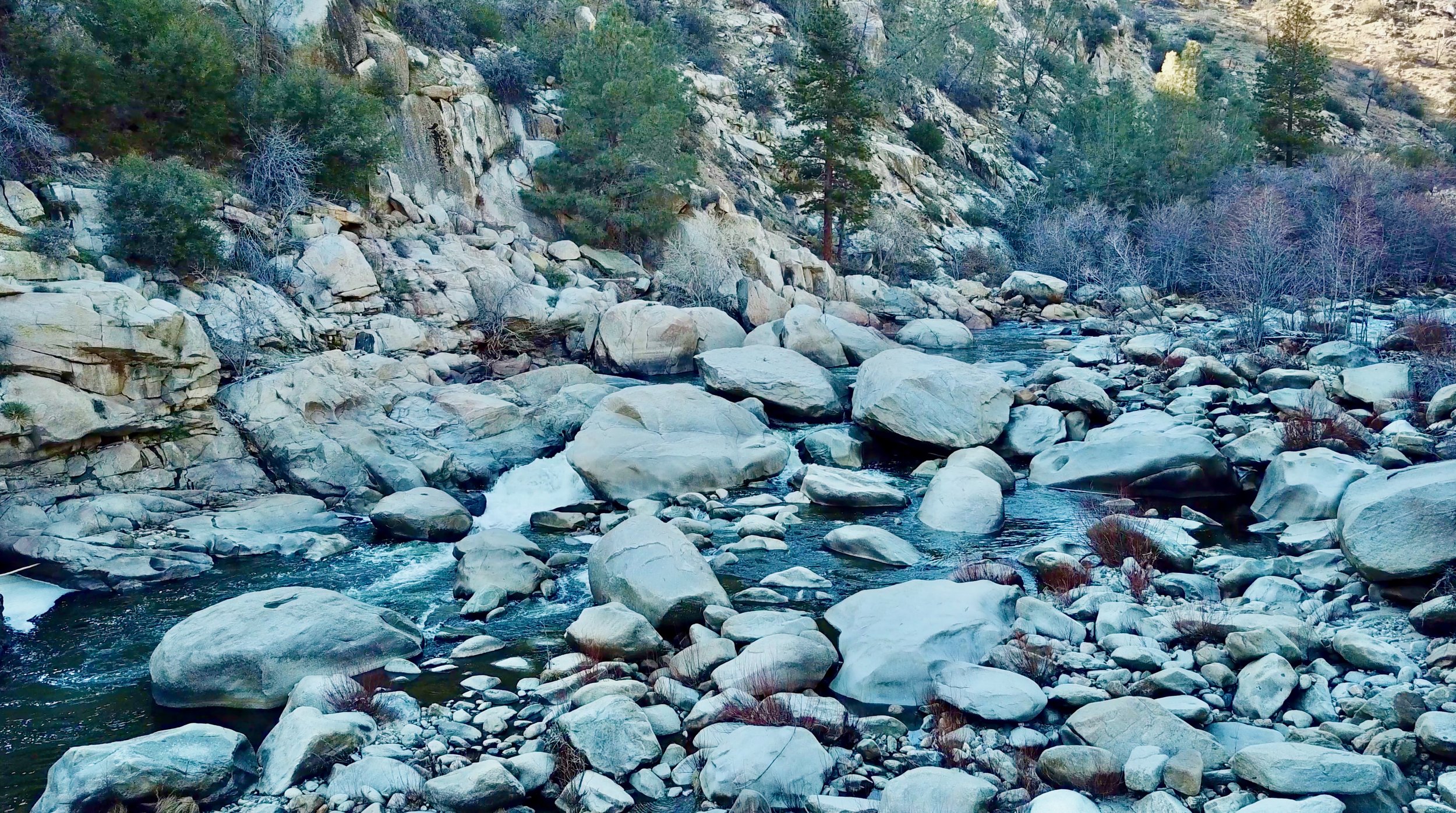I’m Brett Duxbury. You all know me, but not everyone might. I’ve been a resident of Kernville for 16 years. I’m on the Board of Kern River Boaters and the Kern River Fly Fishing Council — both are California public benefit corporations with federal 501c3 status.
I won’t be making an argument for decommissioning like I did with KR3. I am not anti-all-hydro, just anti-pure-Run-of-River hydro, because the latter makes its power in spring, when demand is low and there’s a solar glut, and by late summer when our state needs all the energy it can get, its fuel — snowpack — has been spent.
Storage hydro on the other hand has positives for flood control, agriculture, time shifting energy to when its needed, and actually provides recreation rather than just taking it away all the time.
KR1 is a hybrid: it is Run-of-River, but it runs off storage — the Isabella reservoir — and so unlike KR3, KR1 helps with the steep net ramp and blackout potential in late summer. It also does not dewater a Wild & Scenic River.
The key with KR1 is to regulate it like you’re supposed to: in line with modern social values — not the values of Edison’s old-school hydro managers that tend to make their way through the agencies. If you make sure there remains plenty of water in the river for the public good, I will support this relicensing. Shocking, No?
GEOLOGICS:
I would like to comment on the project’s potential and continuing impacts on Highway 178 between here and Isabella, commonly called “The Canyon.”
The project conveys 1.5 million of pounds of water per minute hundreds of feet above 178.
In August 2013 the conveyance‚ including the emergency spillway, failed during a storm.
An Adit and the Forebay overflowed while Edison continued to pump water, adding fuel to the fire, so to speak. This caused two massive landslides across 178 and closed both lanes of the canyon for about two weeks.
The result of all this was that CalTrans sent Edison a bill for a half million dollars (and Edison wiggled out of it thanks to its political connections) and FERC increased the project’s hazard rating from “low” to “significant.”
I have two points to make about this.
First, a hazard rating of “significant” does not envision the potential for loss of a single life from a failure like this.
That is as out of touch with reality as FERC’s original judgement that the project posed a “low” hazard.
Cars drive fast on 178, and there’s lots of them. It is only by luck that those landslides didn’t kill anyone.
Edison admits it didn’t anticipate this failure, and there is no reason to think this or similar modes of failure can’t happen again.
Conveying millions of pounds of water above the unsuspecting public on a major highway is inherently dangerous to human life.
This project’s hazard rating should be increased to High in the public interest.
My second point concerns the continued closures of 178 from time to time. As we all know from this year’s long closure, that highway is key to linking the Kern River Valley with the outside world.
But it is all-too-frequently closed for shorter periods from smaller rockslides. Myself and others think most of those closures are near the sites of the two landslides Edison caused in 2013 — below Adit 17/18 and the Forebay.
We suspect the hillside stabilization Edison was ordered to undertake was not fully successful.
I ask that an independent engineer perform an analysis of CalTrans 178 closure and repair data.
If that shows a disproportionate number of closures below the Adit and Forebay, the engineer should re-evaluate the hillside for further stabilization measures, which you should then direct Edison to perform prior to issuing a new license.
AQUATICS: FISHERY
According to the rank and file of the Kern River Fly Fishers Club, there used to be bass in this section of river. Folks could pop up after work and enjoy a few hours of fishing.
That incredible resource is not gone. It seems the sediment management plan dreamed up by Edison’s consultants destroyed that fishery.
I understand the plan was approved by all the agencies, but just like FERC’s safety rating, agencies don’t always get things right, and sometimes make huge mistakes. We can’t afford another one here.
Make Edison haul their sediment away, provide radically increased minimum flows, and order Edison to reestablish a viable fishery.
And be skeptical of Edison objections purportedly based on the environment; Edison is adept at using those as a fig leaf to protect their take of water from the river, like they do with the Hatchery up at KR3.
RECREATION
It is 2023, right?
Flow information for every other river segment is available online — even at the Kern Canyon Project.
Why as a boater do I have to sit through a three-minute phone message that is barely intelligible to find the flow below Democrat dam? (Really, try it out when you have a chance: 760-537-6356.)
I have to do that because Edison never gives an inch more than its license demands. And it often finds a way to give less — look back into the portage and fish ladder issues at Fairview Dam.
We need instantaneous online flow information below Democrat dam to safely use the river. Please provide it.
LAND USE & AESTHETICS
The lower Kern has been incredible to look at this year.
That has not been the case the last three years or any time the project reduces the river to fish flow, which is usually a paltry 15 cfs while the project takes 400+.
At those times you see stagnant pools, lots of algae, and where there is moving water, it is narrow, slotted, slow, and hard to see through the road blast.
There was Facebook video last year of a low flying helicopter over fish flow and you could barely make out any patches of water — it looked more like a rock quarry than a river.
According to CalTrans, 2-3 million people drive the canyon one-way each year. Those people — and the day users — deserve something better to look at than a dead river.
I ask that you carefully study aesthetics — not with easily manipulated survey data but with a science-based controlled flow study — and then radically raise minimum flows to keep this looking like a healthy river all year long.
That would also improve water quality, the fishery, and day use recreation, but I know those are separate resource issues — See how they divide and conquer project effects to isolate them and make them look small?
ENVIRONMENTAL JUSTICE
I thought you were supposed to analyze for economic justice as well as environmental? This comment applies to both.
You will probably find the day users of this river disproportionately come from communities suffering economically and environmentally.
There are limited opportunities for quality outdoor recreation around here at the price of this river — about $10 for a family — and the river offers improved air quality and an opportunity to get away from a desert littered with industry and surrounded by big Ag to a better setting (when there’s water), if only for an afternoon.
It follows that the project’s effects on river aesthetics, water quality, and the fishery disproportionately affect these communities.
You should strive for a radically more equitable balance on flows between the public and the powerplant — Heck: make a mistake on the public’s side for a change instead of Edison’s.
